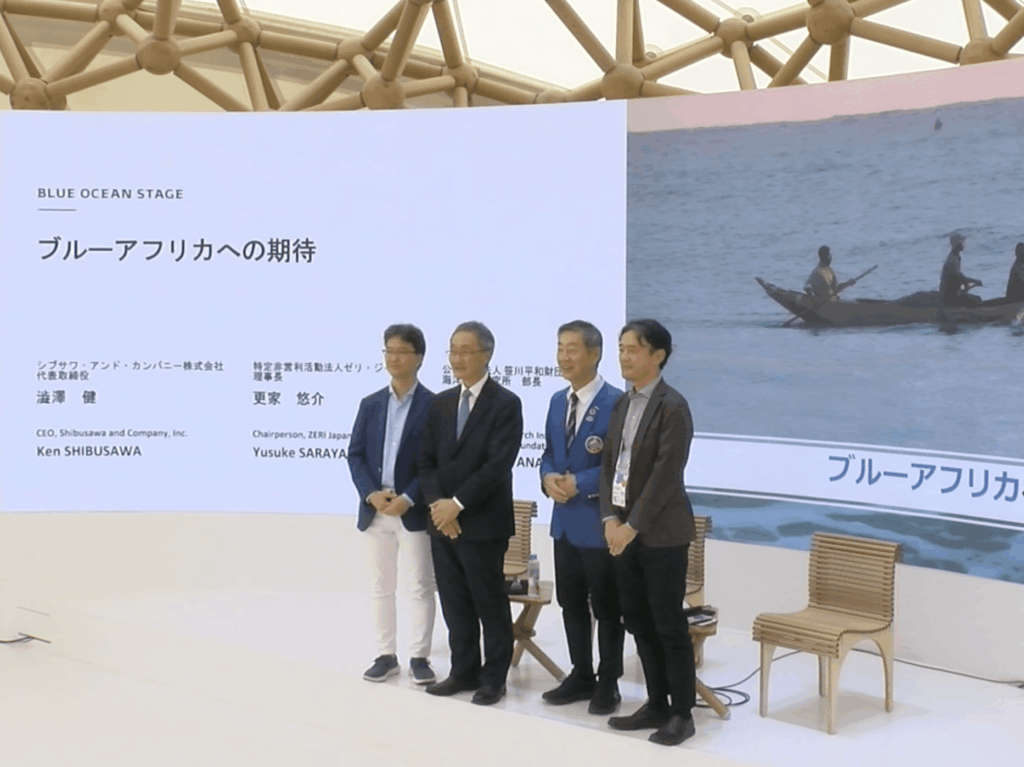
From Monday, June 2nd to Sunday, June 8th, a variety of sessions were held under the theme “Blue Economy: Creating New Ocean Industries,” featuring domestic and international experts and local practitioners. They proposed ways to create new ocean industries toward a sustainable society.
Japan’s Future Role in Realizing a Sustainable Society / Expectations for Blue Africa
Ken Shibusawa, CEO of Shibusawa & Company, Inc., kicked off Blue Economy Week. Shibusawa cited the “Blue Economy” as an area in which Japan, as a maritime nation, should focus. He stated that the key is to work as an equal partner with Africa, where the population is growing, and build a new international model together.
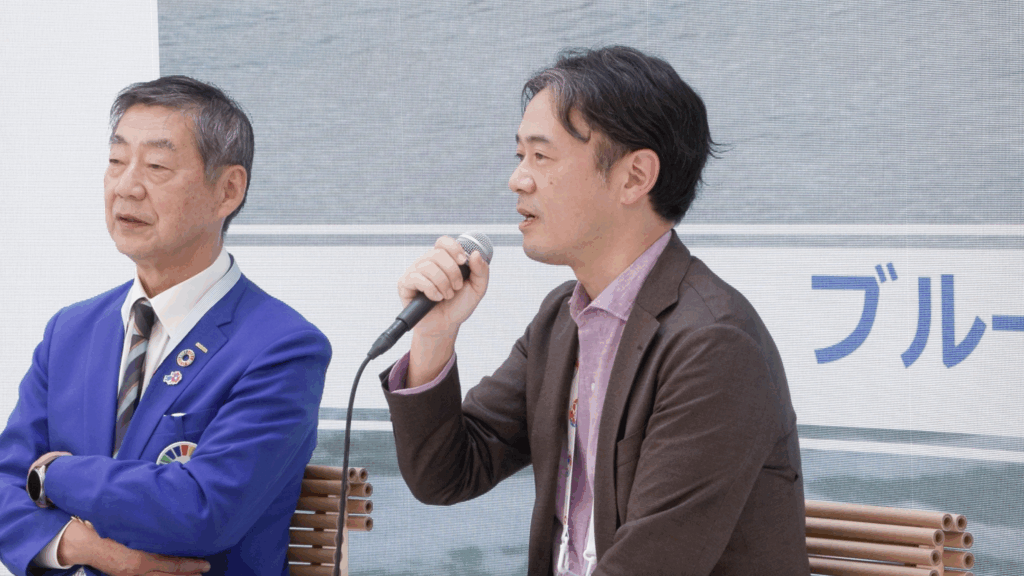
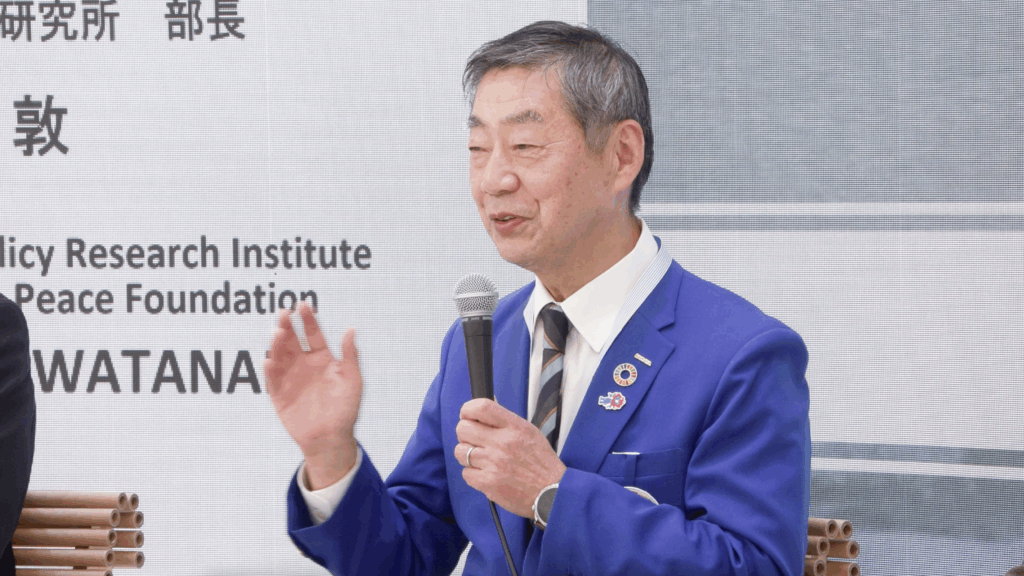
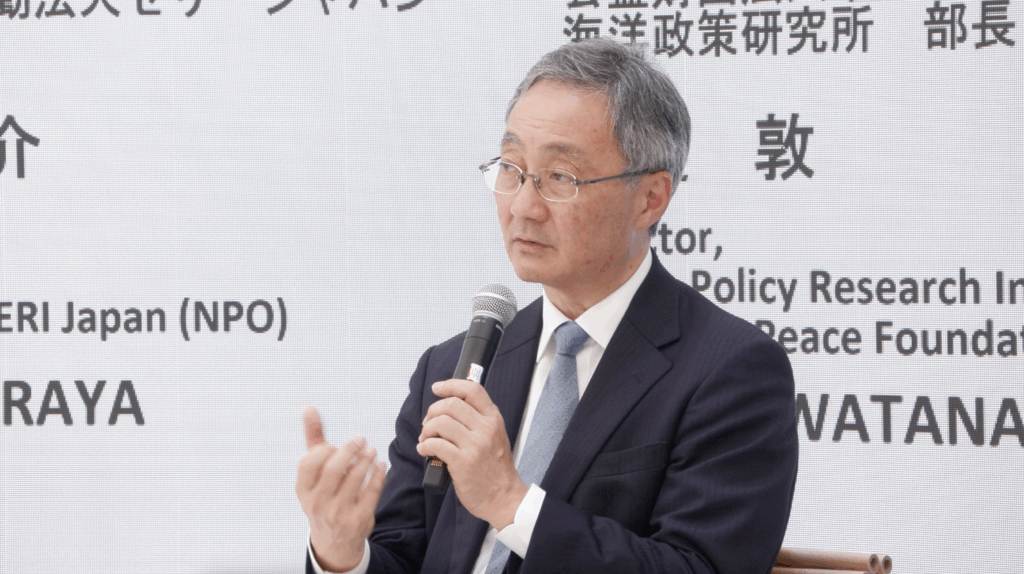
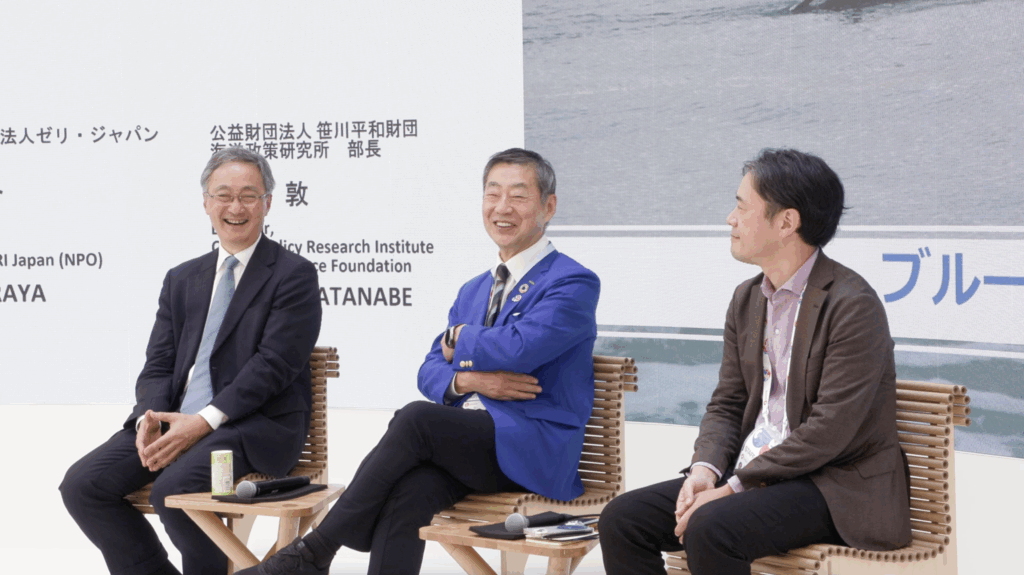
In a talk session featuring Atsushi Watanabe, Director of the Ocean Policy Research Institute at the Sasakawa Peace Foundation, and Yusuke Saraya, Chairman of ZERI JAPAN, they emphasized that Japan’s “Blue Africa” initiative requires more than just financial support; it also requires escort-style cooperation, including human resource development and institutional design. They also emphasized the importance of on-site visits, saying, “seeing is believing,” and expressed their desire to “position this year as the ‘first year of Africa.'”
From Maritime Industry (UMIGYO) to a Japanese-Style Blue Economy (Miura City/Ainan Town)
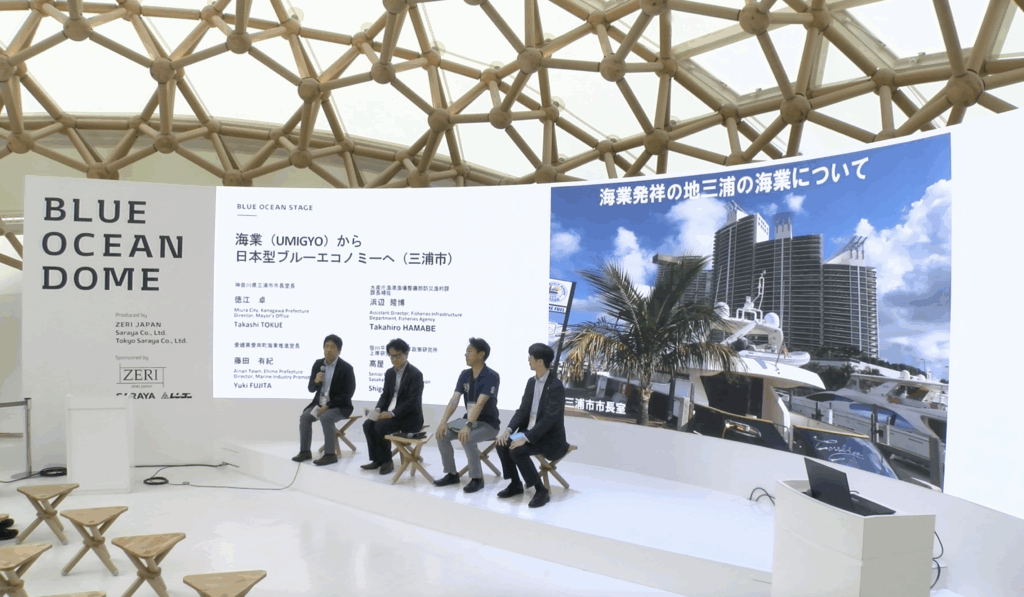
On Tuesday, June 3, a talk event featuring local practitioners was held in Miura City, Kanagawa Prefecture, and Ainan Town, Ehime Prefecture, the setting for the maritime awareness manga “The Secrets of Maritime Industry (Gakken Manga Himitsu Bunko).”
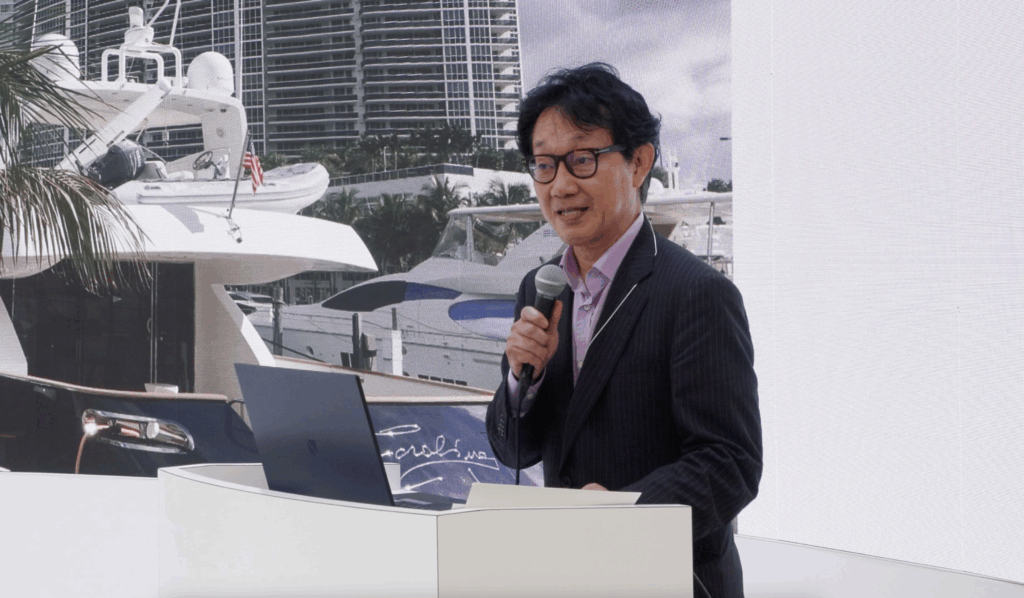
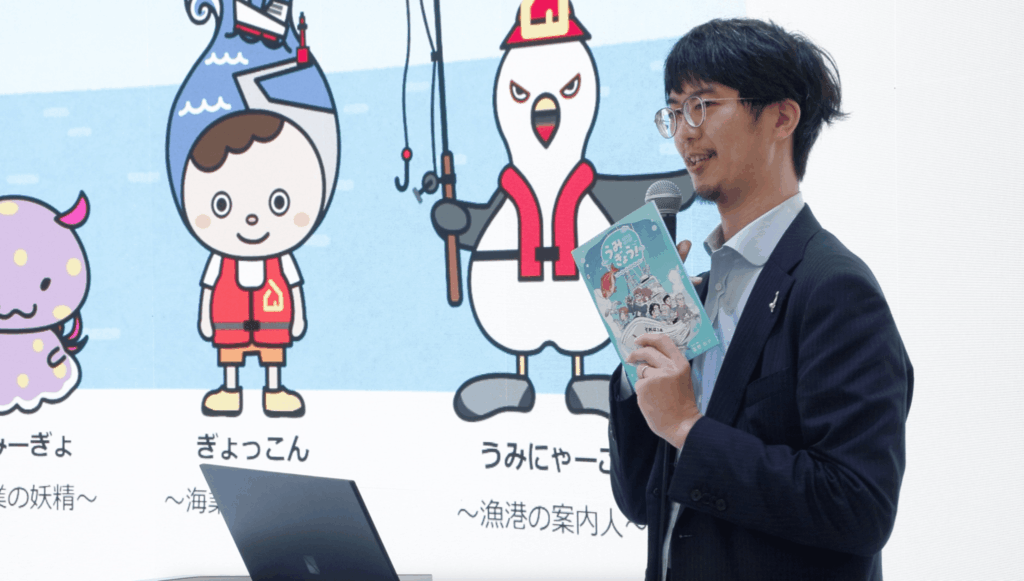
In the first part of the event, Taku Tokue, Director of the Mayor’s Office of Miura City, the birthplace of the maritime industry, took the stage. He introduced regional revitalization efforts centered on fishing, explaining how they encourage youth and women’s participation, enhance local education, and build a circular economy through public-private partnerships. Takahiro Hamabe of the Fisheries Agency also introduced a marine industry PR strategy using familiar methods such as mascot characters and educational manga.
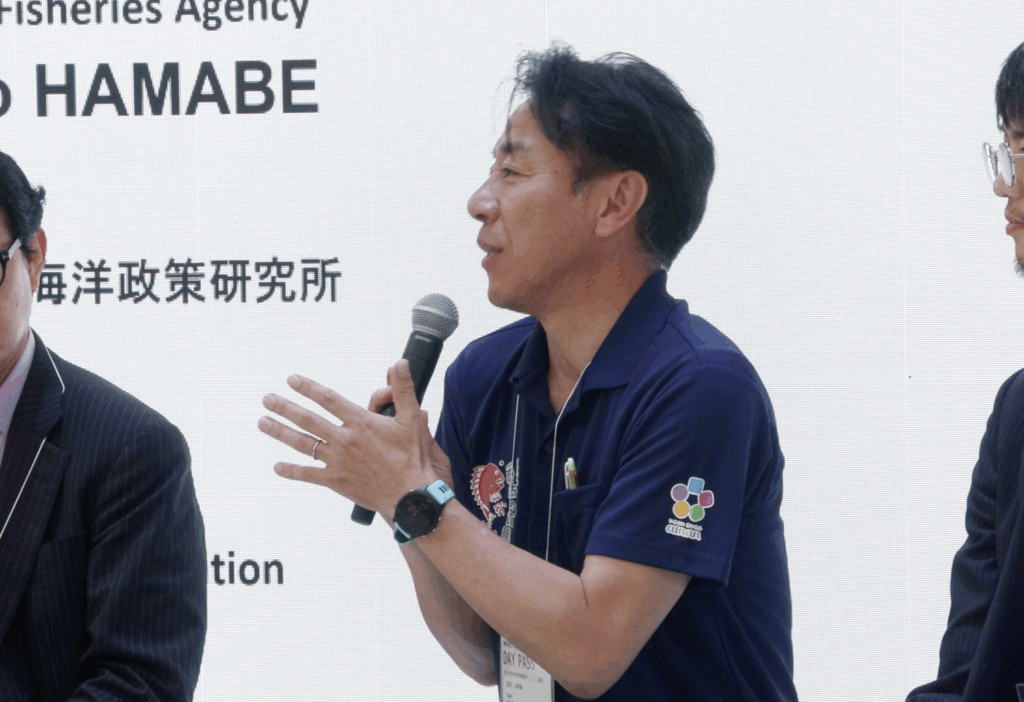
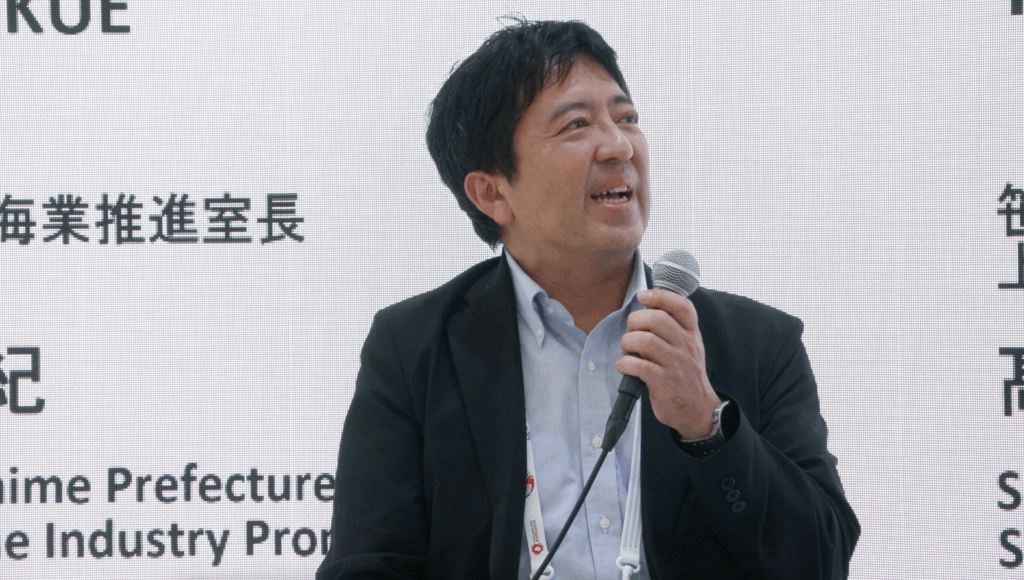
In the second part of the event, Yuki Fujita, Director of the Ainan Town Marine Industry Promotion Office, took the stage to share her vision for a new blue economy that combines marine industry with tourism and education. In a talk session featuring Tokue of Miura City, Fujita of Ainan Town, Hamabe of the Fisheries Agency, and Takaya of the Sasakawa Peace Foundation, they exchanged opinions on the future of the marine industry based on the achievements they have made in their respective regions.
The Frontline of Aquaculture: Its Potential
The talk session on Wednesday, June 4, discussed the potential of aquaculture, which is attracting attention amid growing demand for seafood.
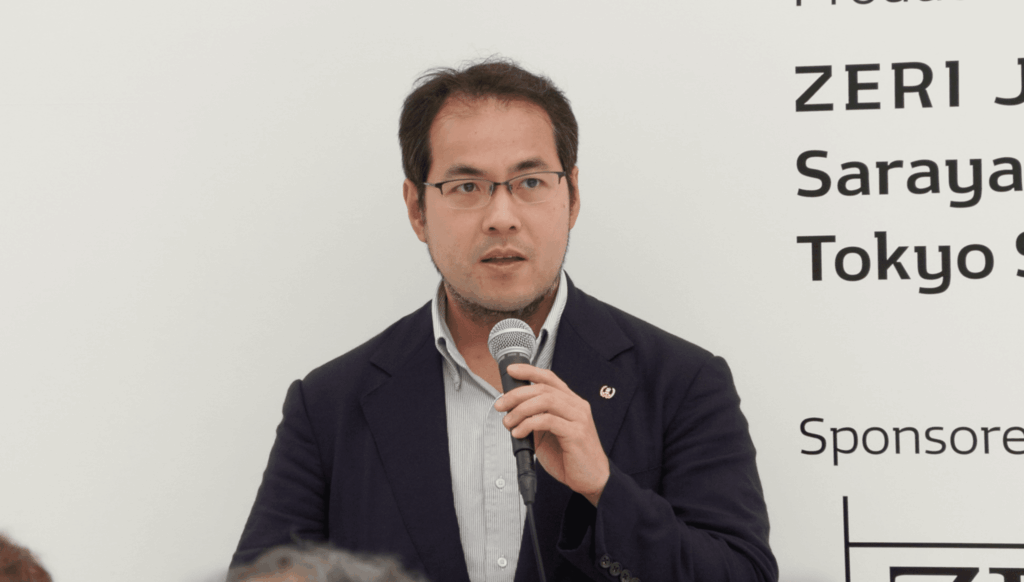
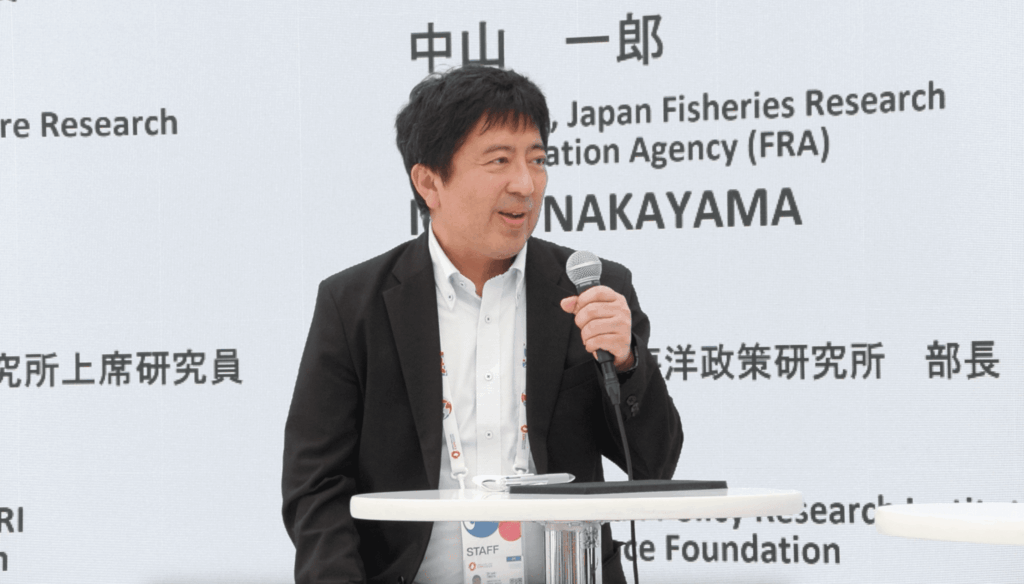
In the first part of the event, Ichiro Nakayama, Chairman of the Japan Fisheries Research and Education Agency, took the stage to introduce efforts to realize a sustainable fisheries industry under the slogan “Delicious Fish Forever.” Nakayama emphasized the importance of leveraging Japan’s strength in a stable supply of brand-name fish such as red sea bream and yellowtail while promoting labor-saving and efficiency improvements through “smart aquaculture” using ICT and AI. Keitaro Iedo, Director of the Kinki University Fisheries Research Institute, reported on the progress and results of full-scale bluefin tuna aquaculture. He discussed next-generation aquaculture packages that scientifically control the three elements of aquaculture (fish, feed, and environment) and research using mackerel as a model fish.
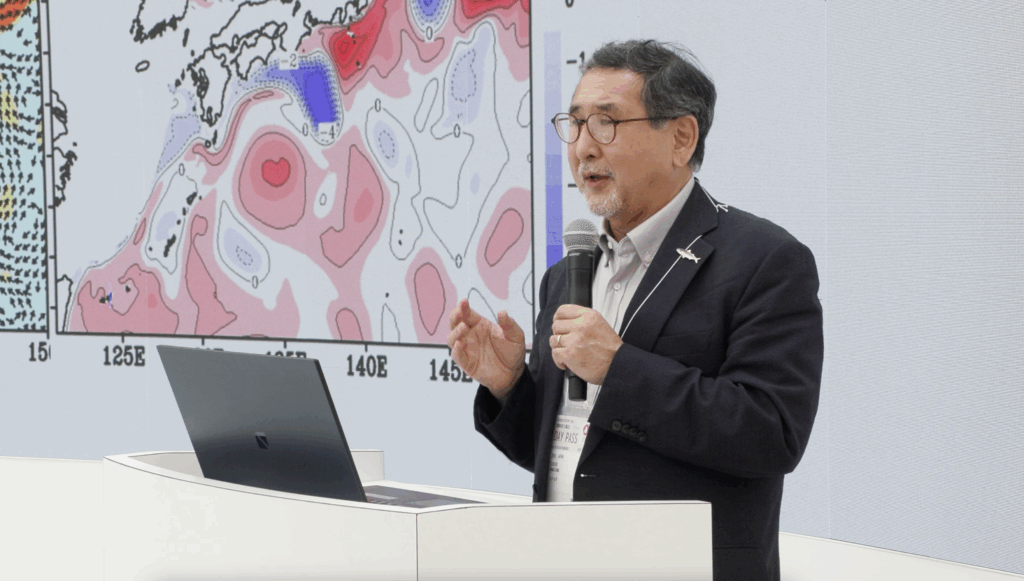
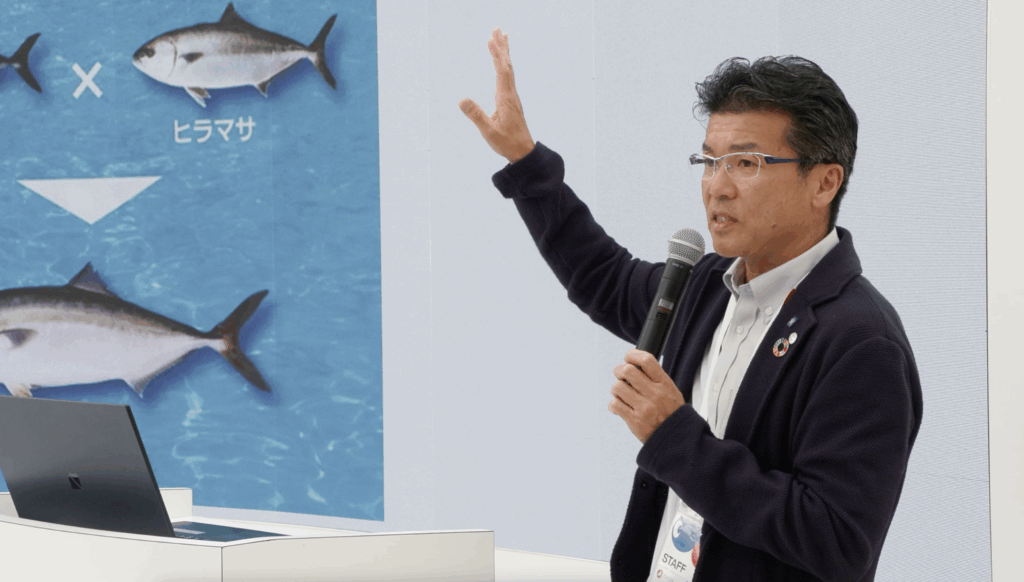
In the second part of the event, a lecture focused on the regional contributions and international collaboration of land-based aquaculture. Keisuke Nakayama, Business Development Director at Proximar, introduced a land-based salmon aquaculture project utilizing technology developed in Norway, emphasizing the potential for job creation and ripple effects on the local economy through collaboration with local companies. Next, Takakiyo Watari, CEO of Saraya Aquaculture, which cultivates Kishu shrimp in Susami Town, Wakayama Prefecture, spoke emphatically about steadily promoting the shift from “catching” seafood from the ocean to “producing” it on land through technological innovation and building trust.
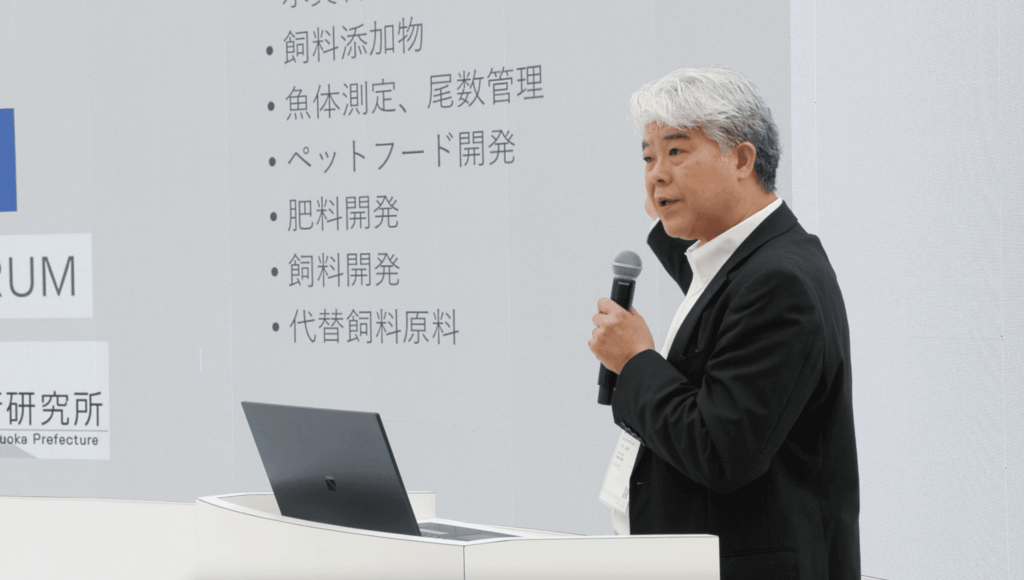
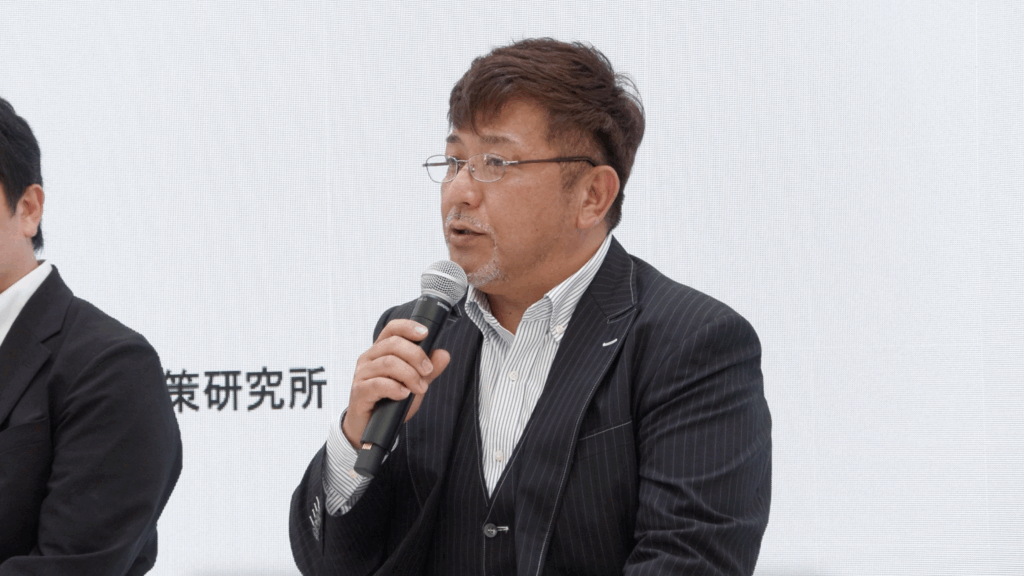
Both sessions provided an opportunity to reaffirm that aquaculture is not just about food production; it is also expected to serve as a foundation for regional development and international cooperation that contributes to the realization of the blue economy.
Marine Environment Restoration and Ocean Visualization (Domestic Session/Global Session)
On Thursday, June 5, a two-part talk session was held on the theme of “Marine Environment Restoration and Ocean Visualization.” It consisted of a domestic and a global session.
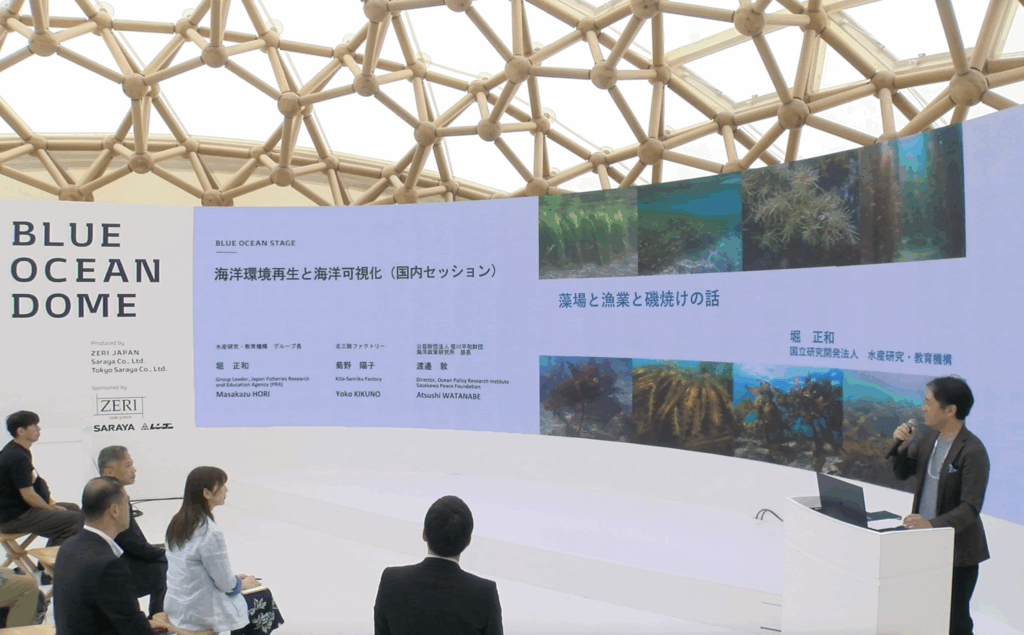
In the domestic session, Masakazu Hori of the Fisheries Research and Education Agency (FRA) presented efforts to restore seaweed beds and tidal flats lost due to coastal denudation. He emphasized the importance of utilizing blue carbon to reassess the value of seaweed beds as an industry from the perspectives of carbon fixation and ecosystem services.
Next on stage was Yoko Kikuno of Kitasanriku Factory. Kikuno, whose company is engaged in seaweed bed conservation activities through the operation of a “sea urchin ranch,” reported on the company’s ongoing efforts to develop a demonstration model for balancing sea urchin farming and seaweed bed restoration using the “UNI-VERSE systems,” developed in collaboration with Hokkaido University.
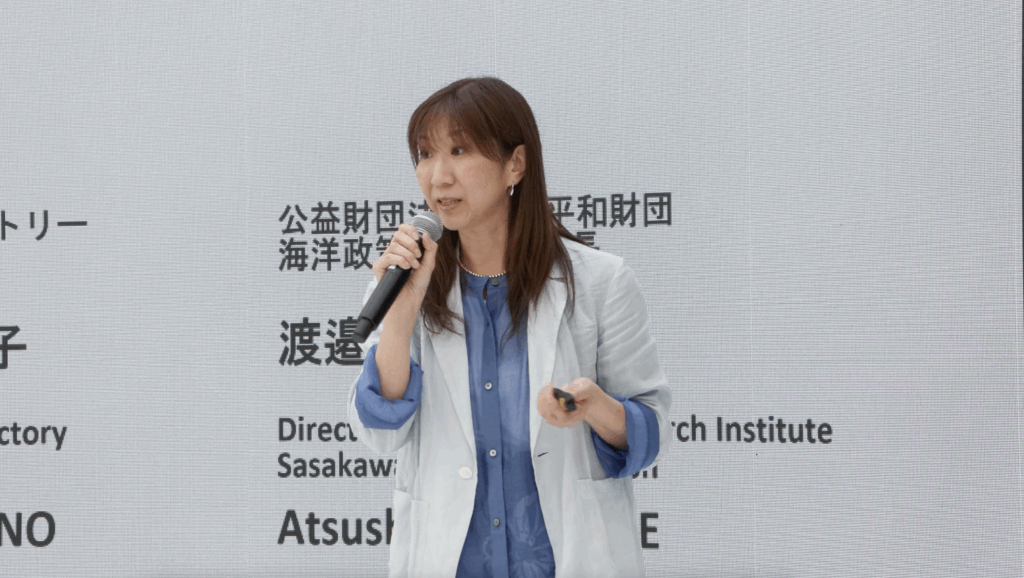
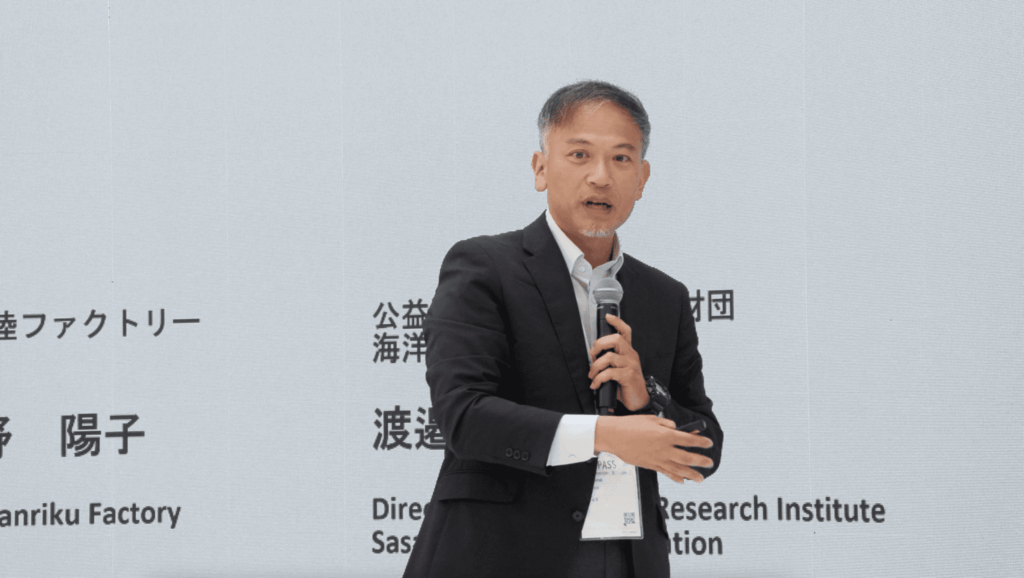
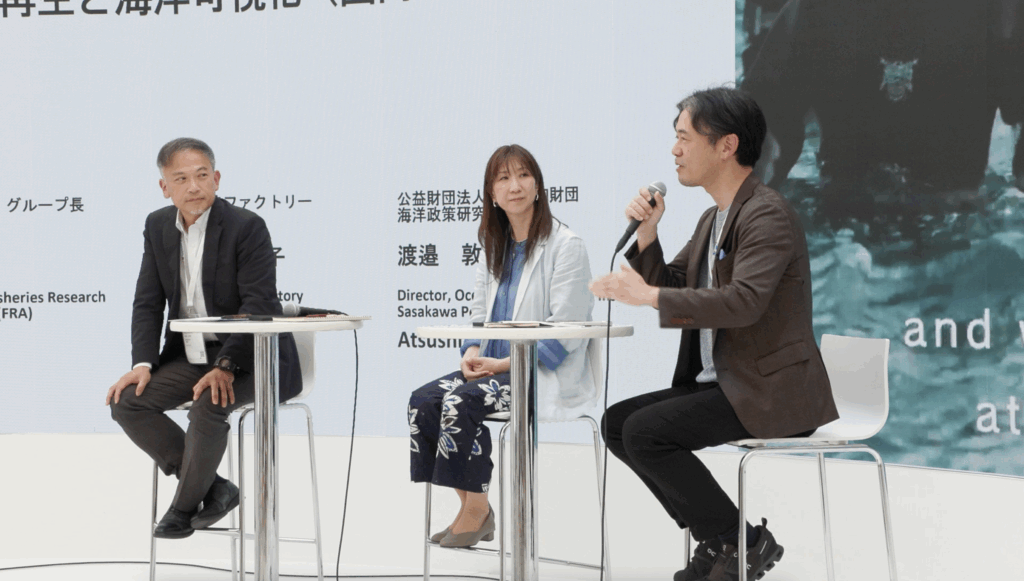
During the global session, Hirokazu Suzuki, CFO of Kitasanriku Factory, spoke about initiatives to attract public interest and expand opportunities for co-creation, including the overseas expansion of the “UNI-VERSE systems” and the interactive event “UNI SUMMIT.” John Keane of the University of Tasmania in Australia also spoke about the decline of seaweed beds and the challenges of the sea urchin fishery’s sustainability, highlighting the need for scientifically based investment in restoration.
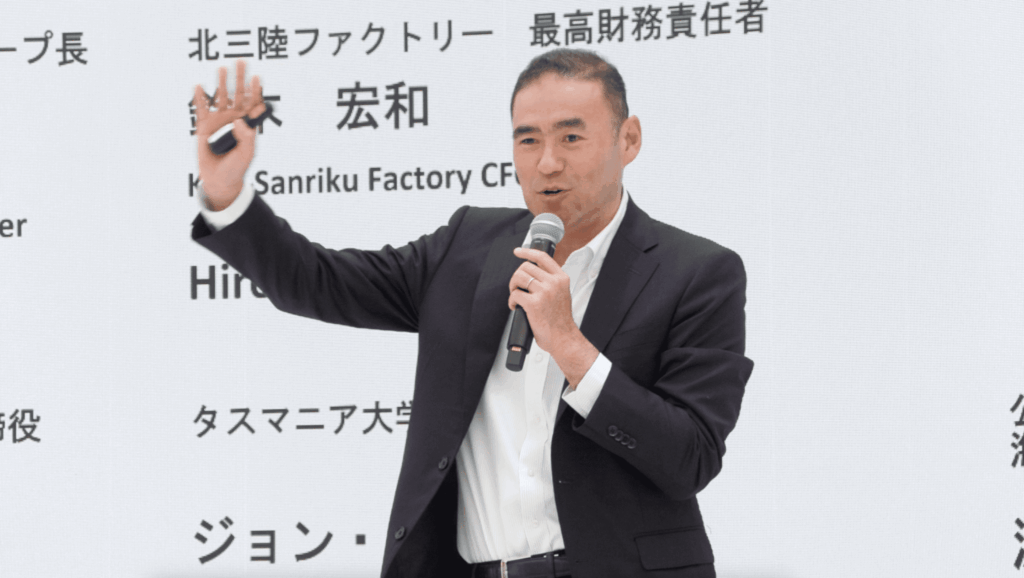
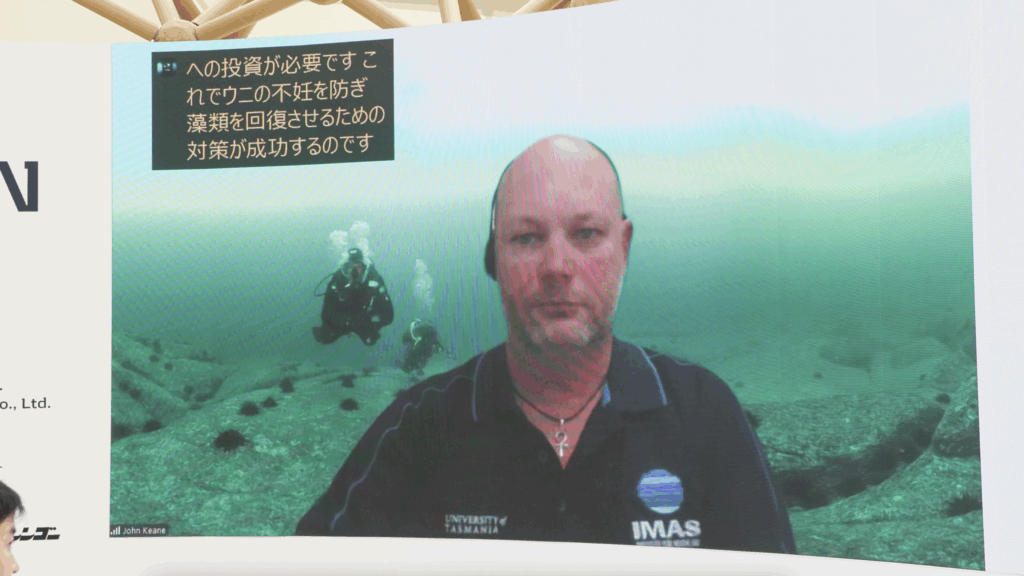
Ryosuke Itai, CEO of UMIAILE, shared examples of marine data acquisition and visualization using small unmanned vessels (ASVs), highlighting the potential for data utilization in coastal observation, fisheries support, and disaster assessment.
In the second half of the lecture, Mr. Hori joined in a cross-talk session. Participants reaffirmed the importance of visualizing the current state of the ocean and creating a system that enables diverse stakeholders to collaborate and lead to next action.
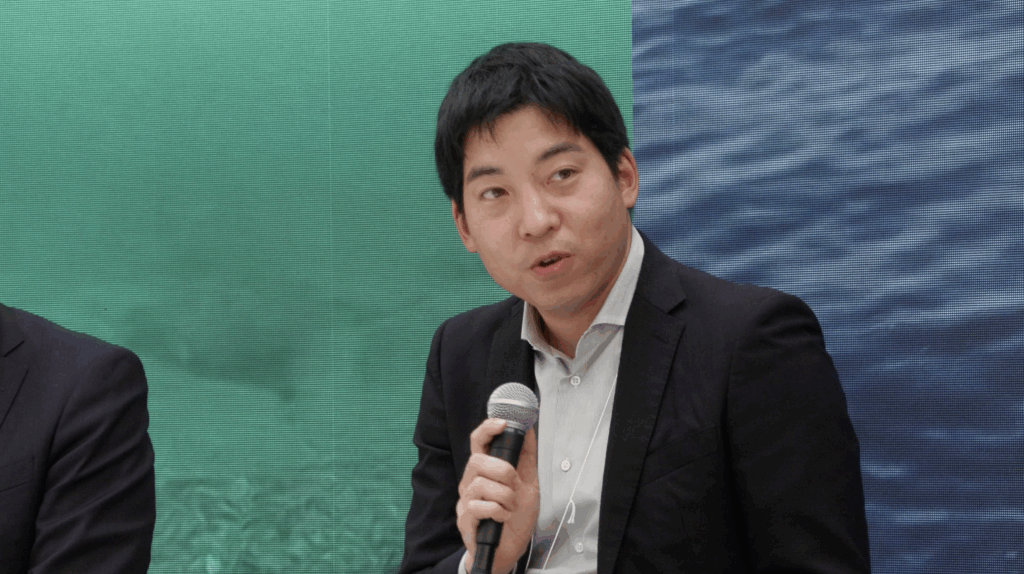
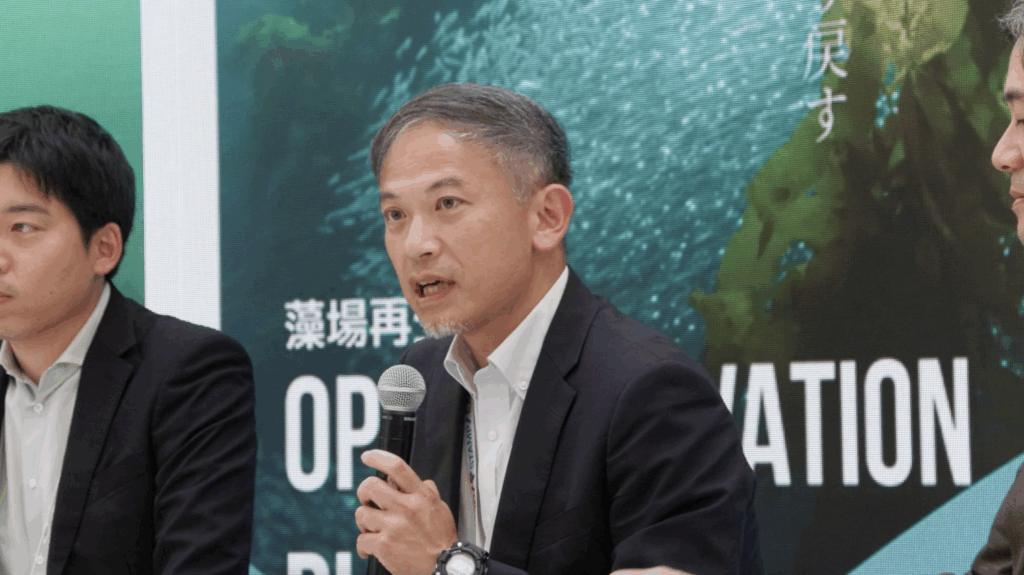
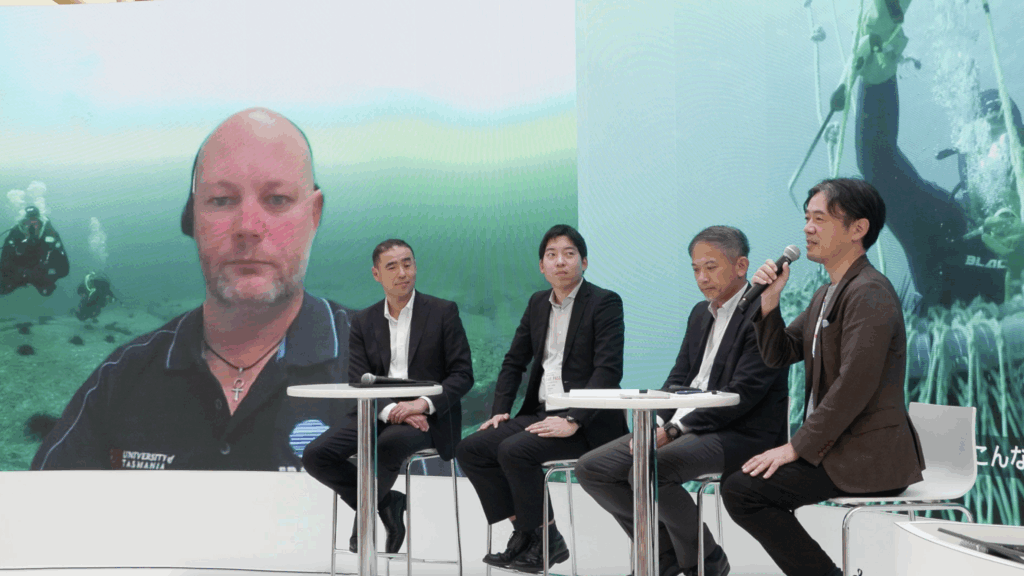
Screening of the film “The Vanishing Seaweed Forest” and Talk Show / “The Vanishing Seaweed Forest” and Conservation and Restoration Efforts in Various Regions
On Friday, June 6th, we screened the film “We Are Here, We Are Alive: Guided by the Vanishing Seaweed Forest” and held a talk show. The film chronicles the efforts of people working to protect the ocean in harmony with nature. It was a fascinating experience, carefully portraying not only the seriousness of the ocean’s problems but also hope for restoration and the connection between people and nature.
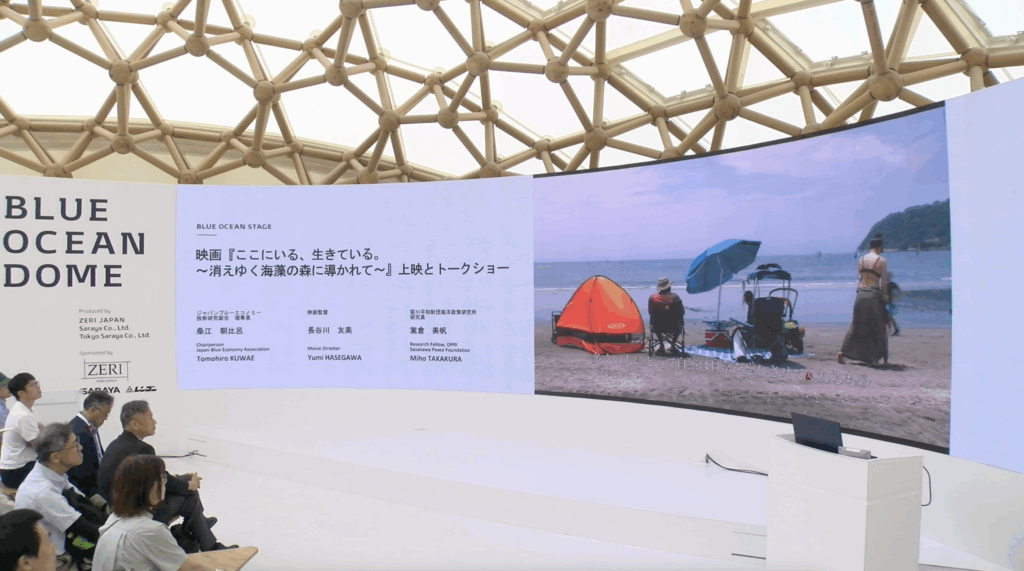
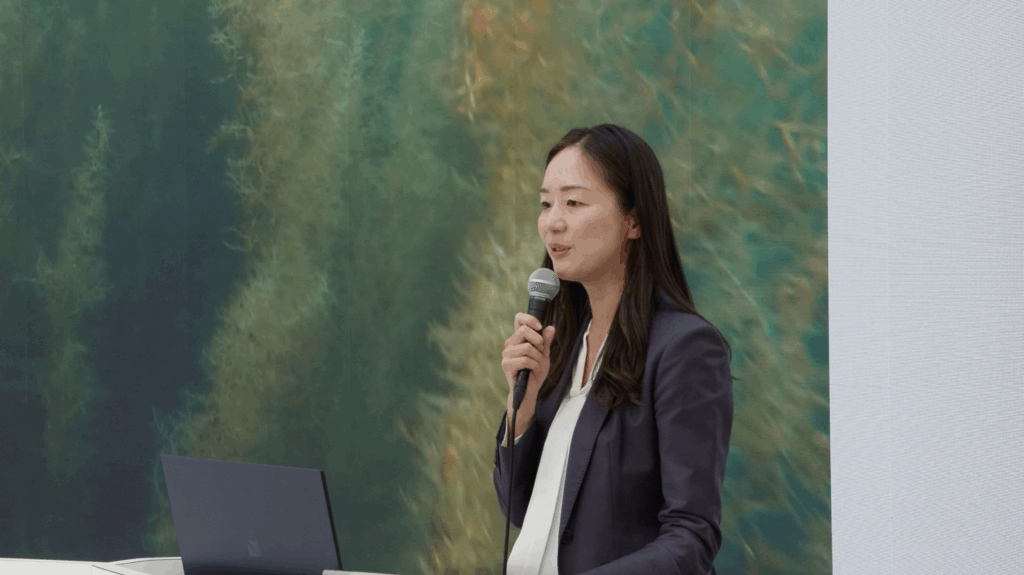
After the screening, director Tomomi Hasegawa and actor Tomohiro Kuwae, Chairman of the Japan Blue Economy Technology Research Association, took to the stage for a talk show. They stressed that preserving the marine environment requires the understanding and involvement of not only experts but also the general public, and reiterated the importance of restoration efforts that utilize local knowledge and experience.
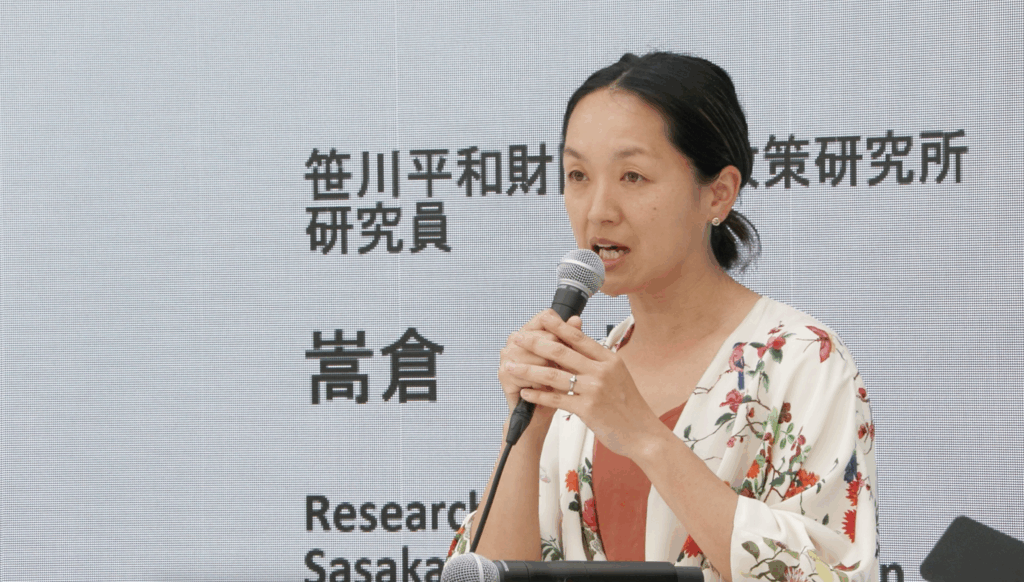
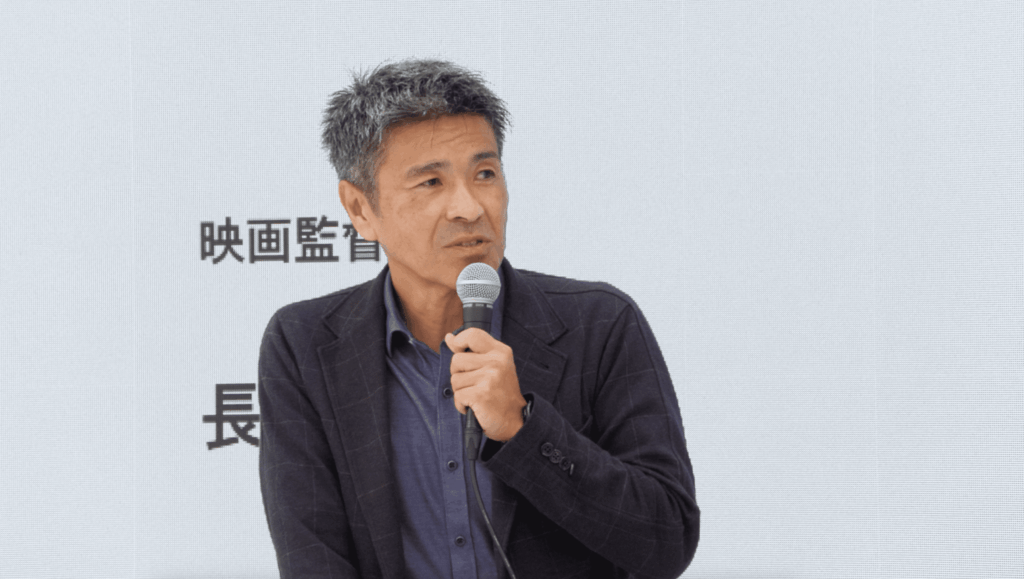
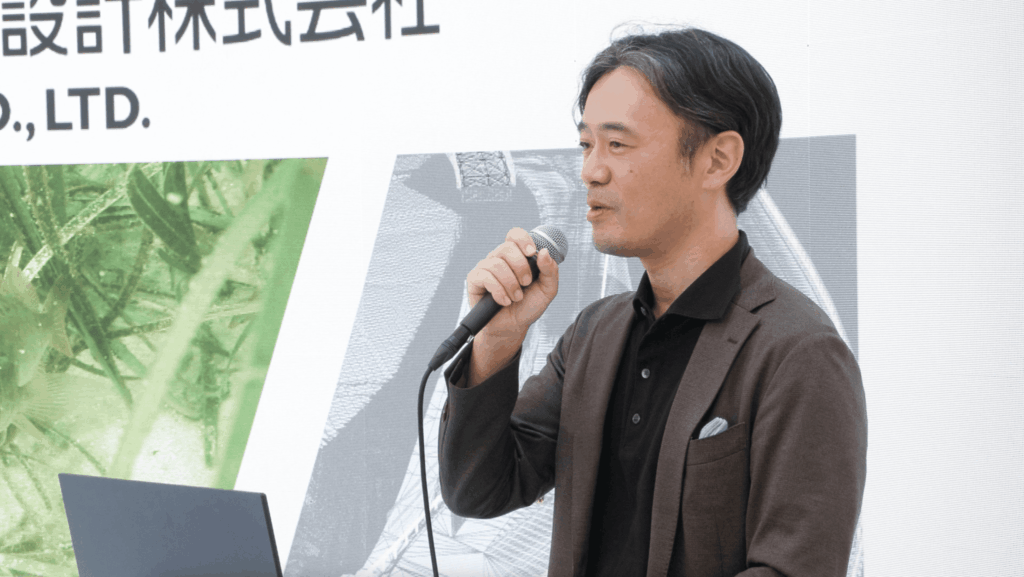
In the second part of the event, which featured examples of conservation and restoration activities being carried out by companies and organizations in various regions, Yugo Mito of Fukken Survey and Design Co., Ltd. introduced examples such as the use of satellite imagery to analyze seaweed bed areas and support for measuring CO₂ absorption in tidal flats.
Next, Koichiro Kamio of Tokyo Kyuei Co., Ltd. shared the potential for regional revitalization through the maritime industry, including the creation of seaweed beds at the Oshima tidal flats in Shunan City, Yamaguchi Prefecture, fishing experiences, and seafood branding.
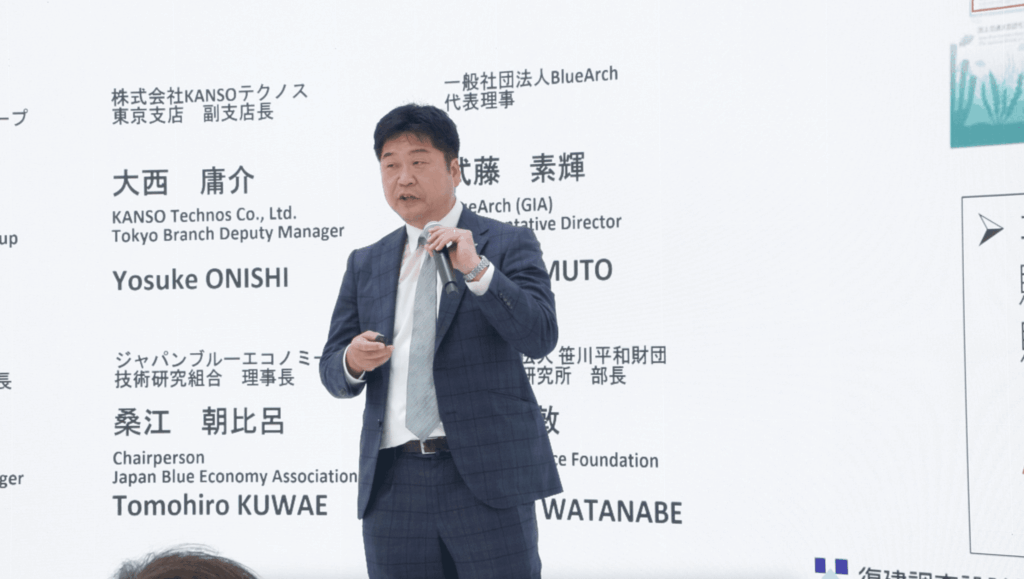
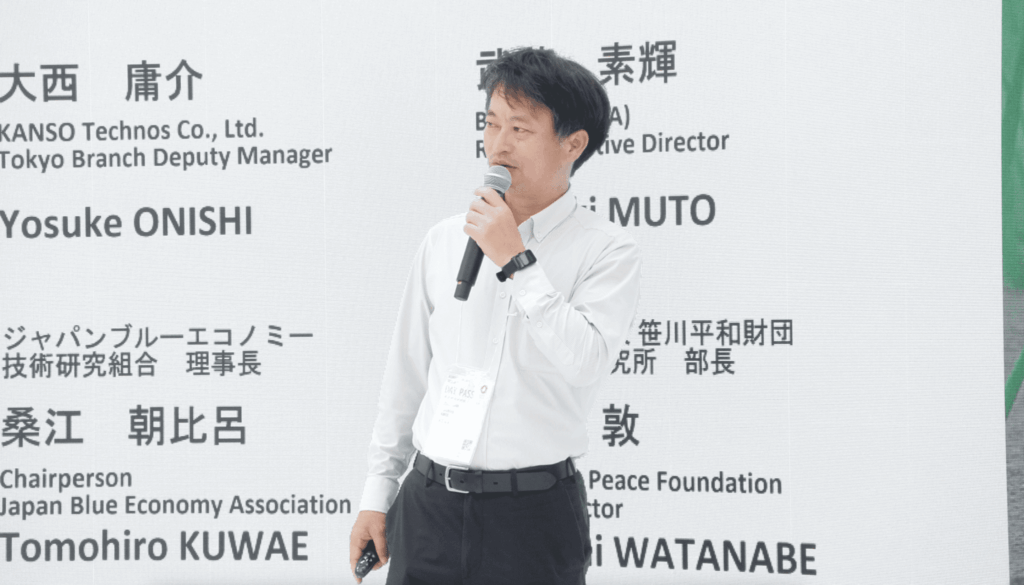
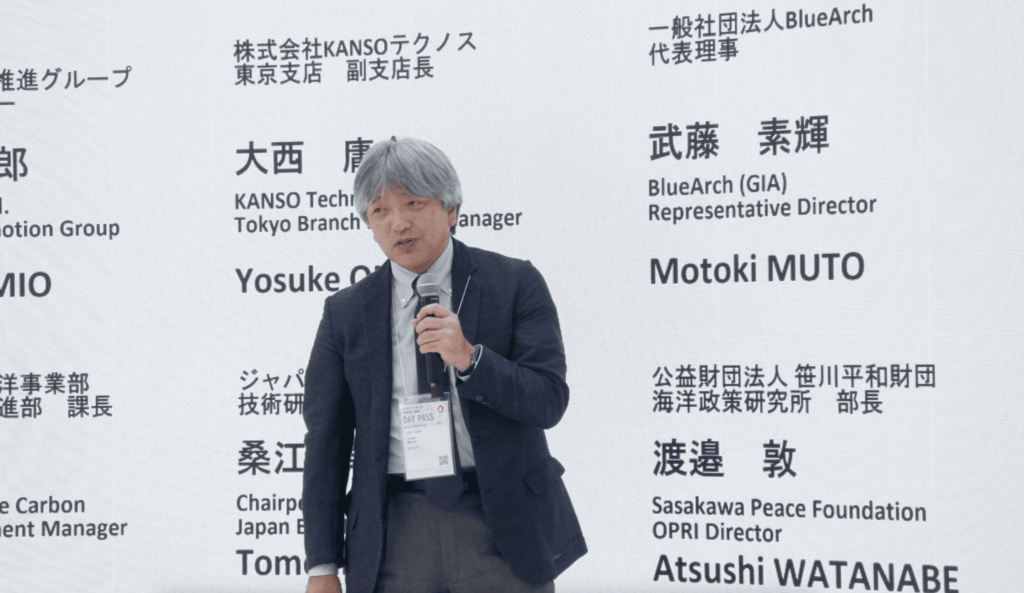
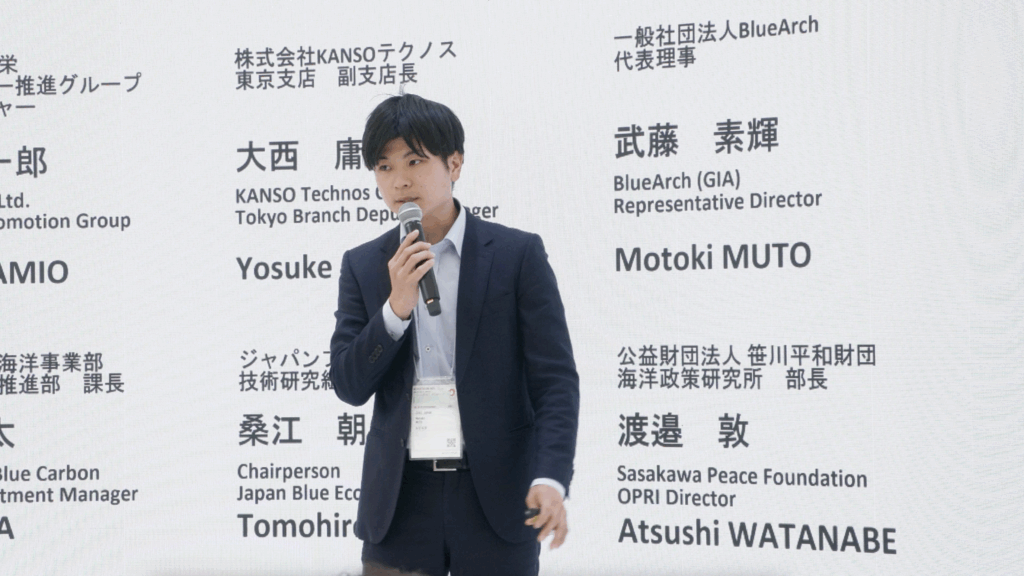
Yosuke Onishi of KANSO Technos Co., Ltd. reported on research examples using cutting-edge technologies such as environmental DNA analysis and AI image analysis, demonstrating how these can contribute to a “nature positive” approach that aims to achieve both decarbonization and biodiversity.
Motoki Muto of BlueArch General Incorporated Association shared his experience supporting the creation of blue carbon credits in four regions in Kanagawa Prefecture. He explained how surveys and visualizations using underwater drones and AI are contributing to the promotion of locally led blue carbon.
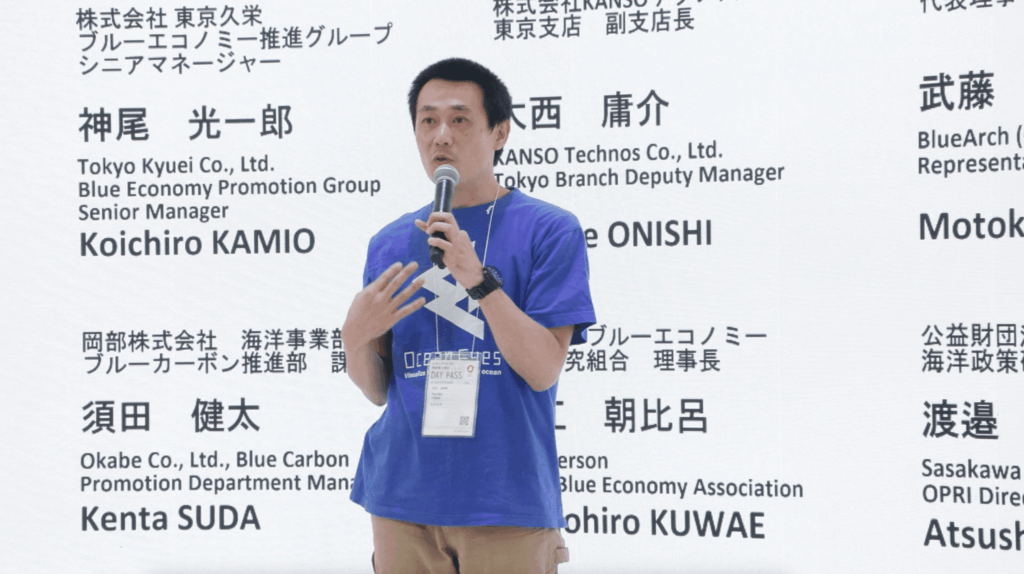
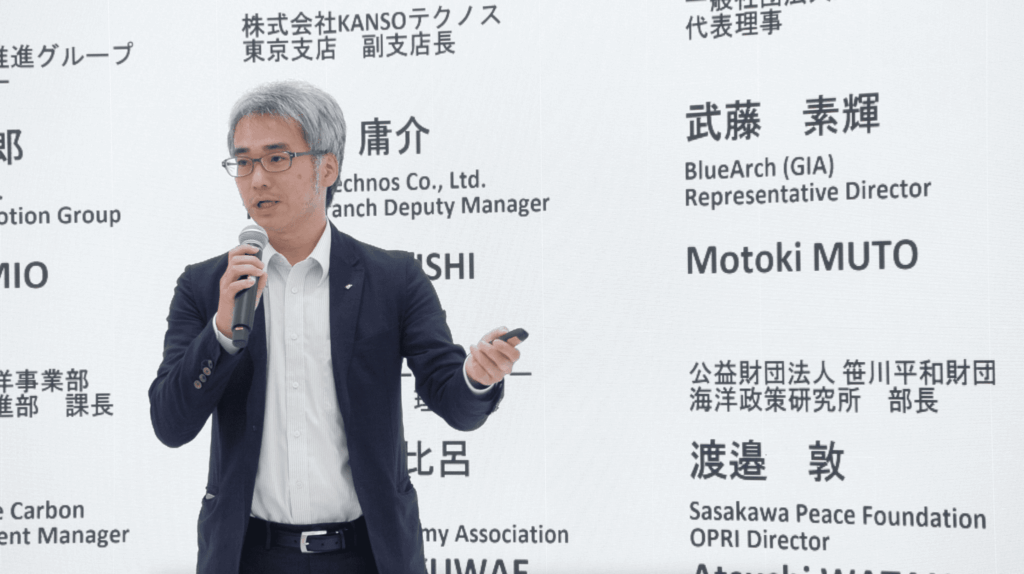
Furthermore, Yusuke Tanaka of Ocean Eyes, Inc. emphasized the importance of raising public interest through visualization of the underwater environment and creating systems that encourage participation from a variety of perspectives. Kenta Suda of Okabe Co., Ltd. explained the role of seaweed in carbon absorption and ecosystem conservation, as well as technical efforts to combat coastal barrenness and restore seaweed beds.
In a final discussion, the speakers shared their perspectives on future research.
Innovation from Seaweed (Pre-World Ocean Day Event)
On Saturday, June 7, a session was held under the theme of “Innovation from Seaweed,” focusing on the multifaceted co-benefits of seaweed in the environmental, industrial, and social fields.
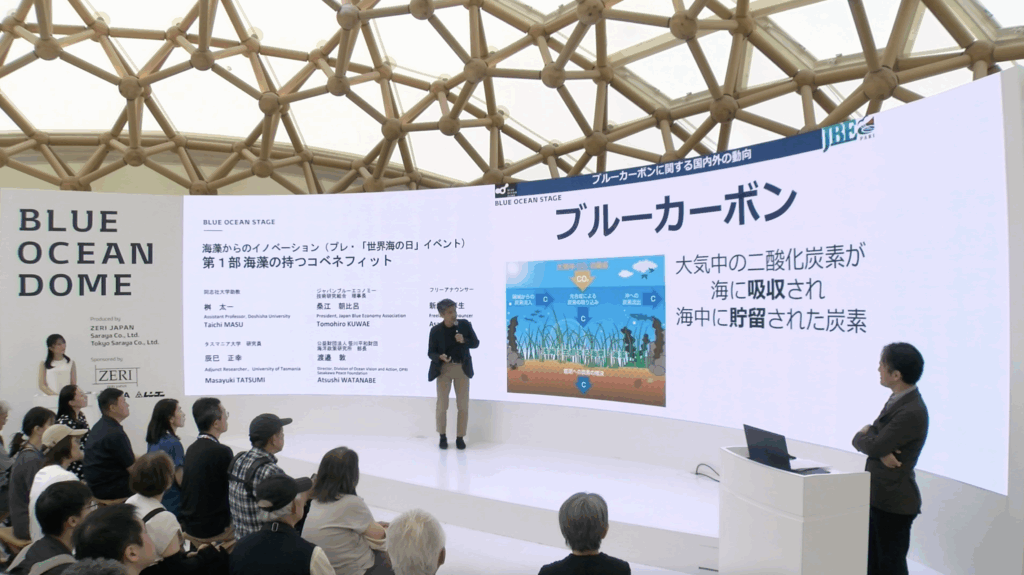
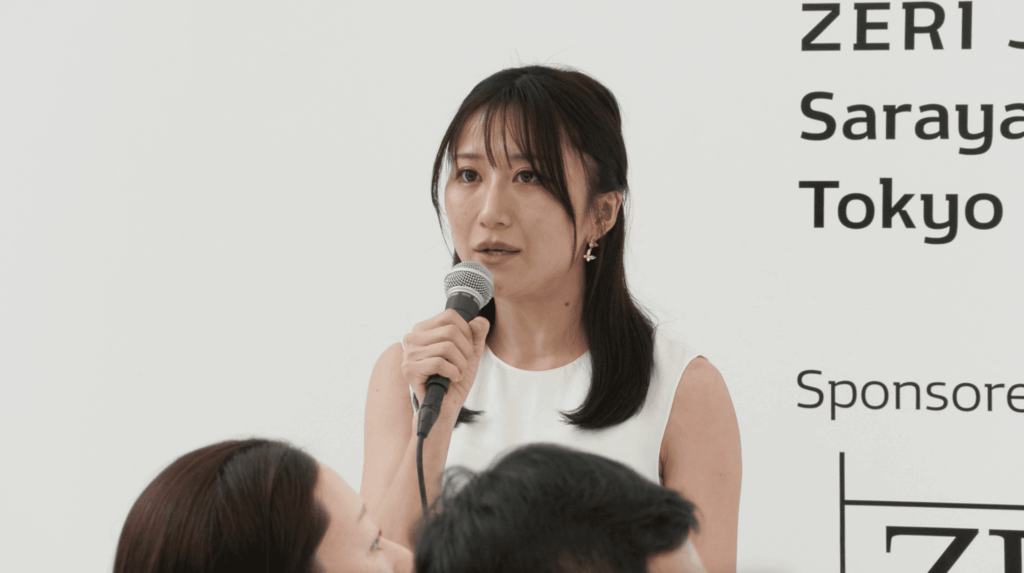
In the first part of the event, Tomohiro Kuwae, Chairman of the Japan Blue Economy Technology Research Association, explained the sustainable value of seaweed restoration, including its carbon absorption capacity and biodiversity conservation effects. Taichi Masu, assistant professor at Doshisha University, spoke about the potential for seaweed-based education and research, and emphasized the importance of disseminating information through the media.
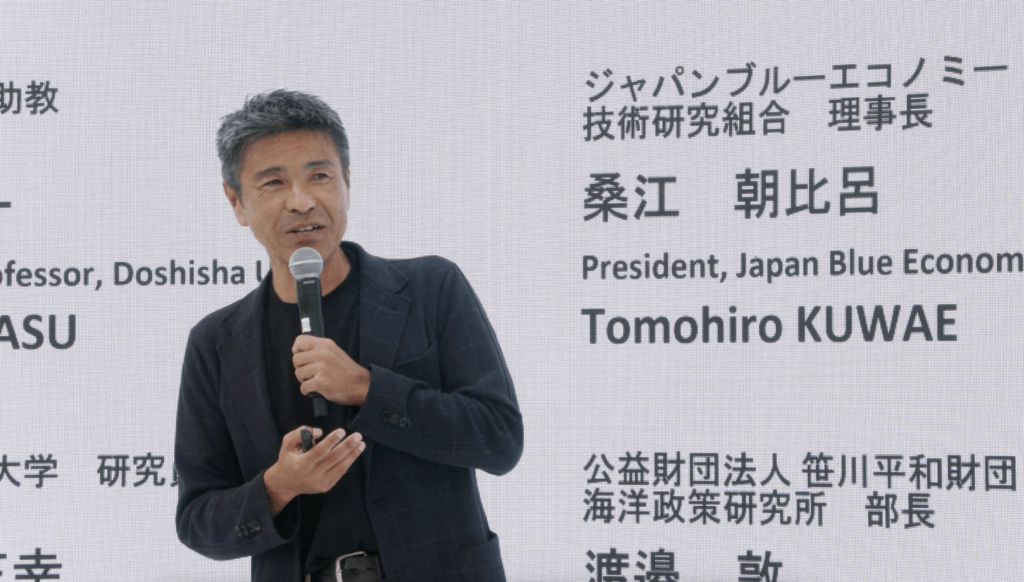
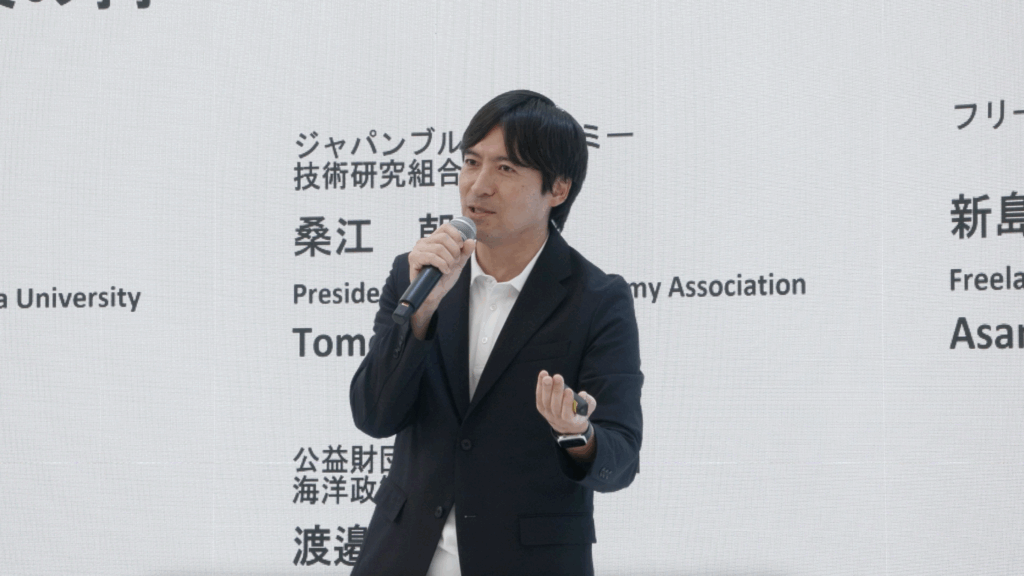
In a subsequent cross-talk session, Masayuki Tatsumi, researcher at the University of Tasmania, and Atsushi Watanabe, director of the Ocean Policy Research Institute at the Sasakawa Peace Foundation, discussed the importance of promoting seaweed-based social implementation through collaboration between the environment, education, and policy.
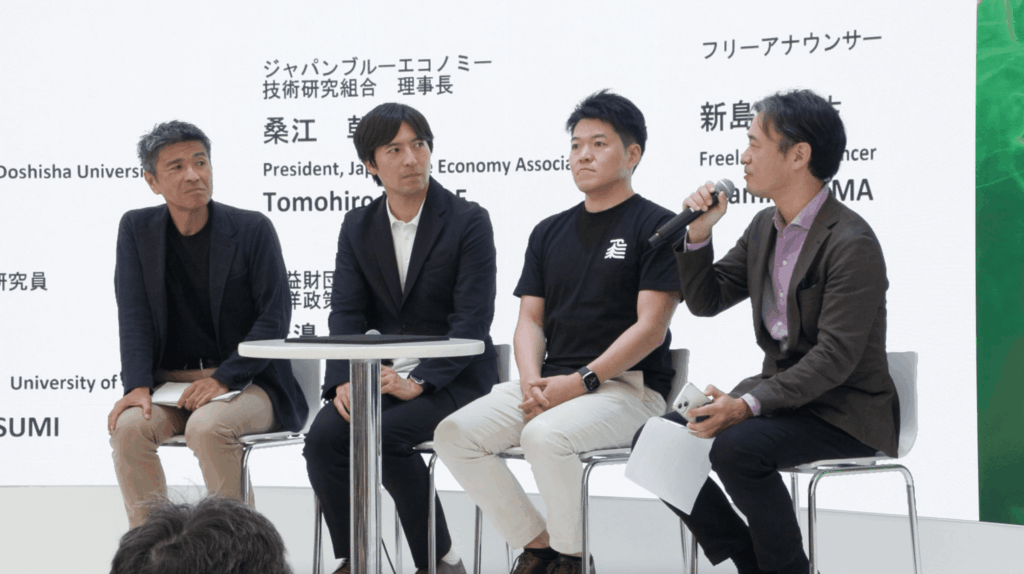
The second part of the event delved deeper into advanced technologies and product development efforts using seaweed. Alyssa Miki, CEO of Aqua Theon Inc., reported on the development of alternative plastics and biomass materials made from seaweed and shared her vision for expanding its industrial use. Masayuki Tatsumi, head of research and development at Sea Forest, presented on methane suppression technology using Asparagopsis seaweed in Tasmania. Tatsumi demonstrated that these technologies could significantly reduce methane emissions from cow burps.
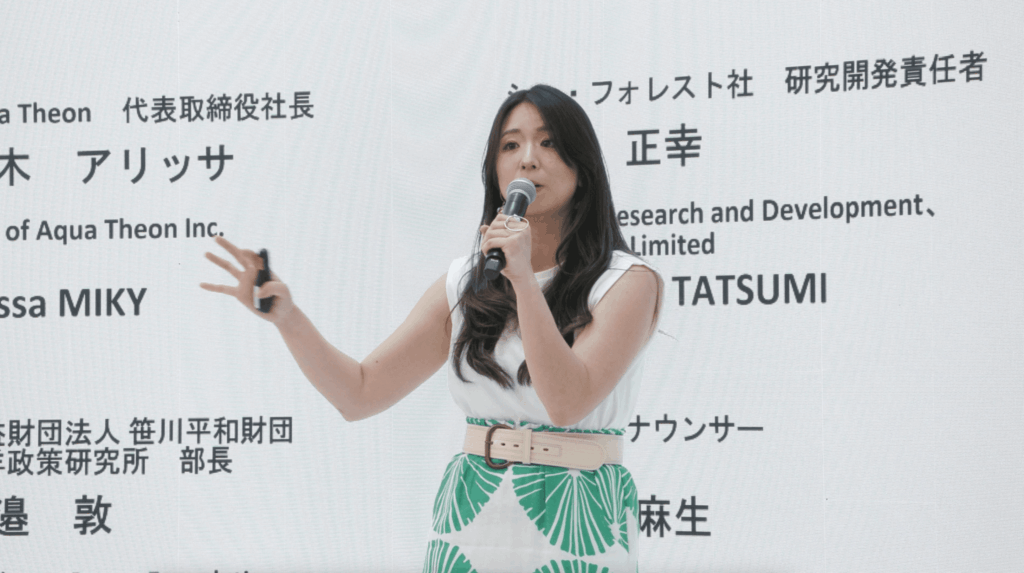
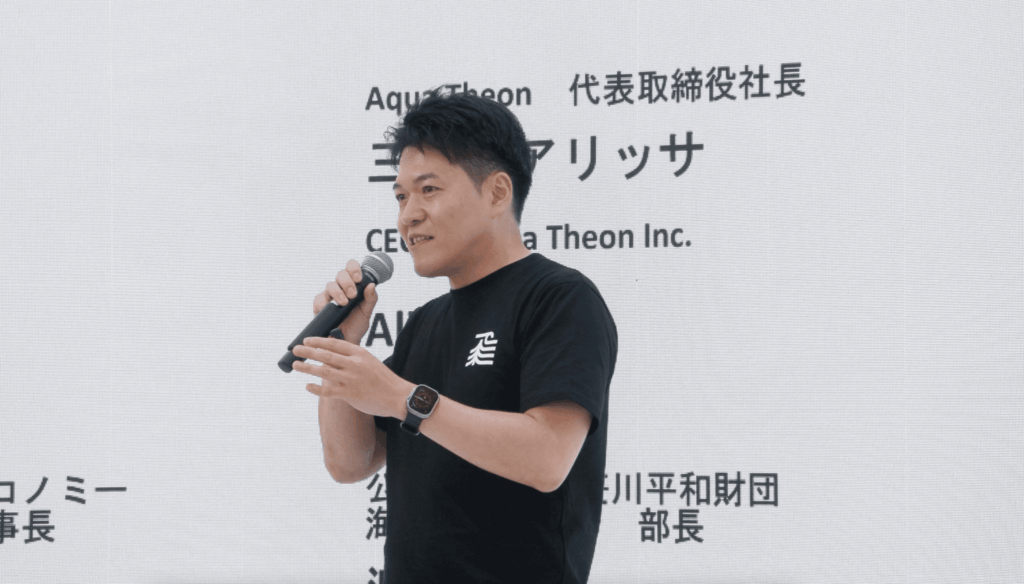
Part one’s panelists also joined in a cross-talk session, sharing their thoughts on the potential for seaweed innovation through collaboration between research, industry, and education, as well as on passing on this knowledge to future generations.
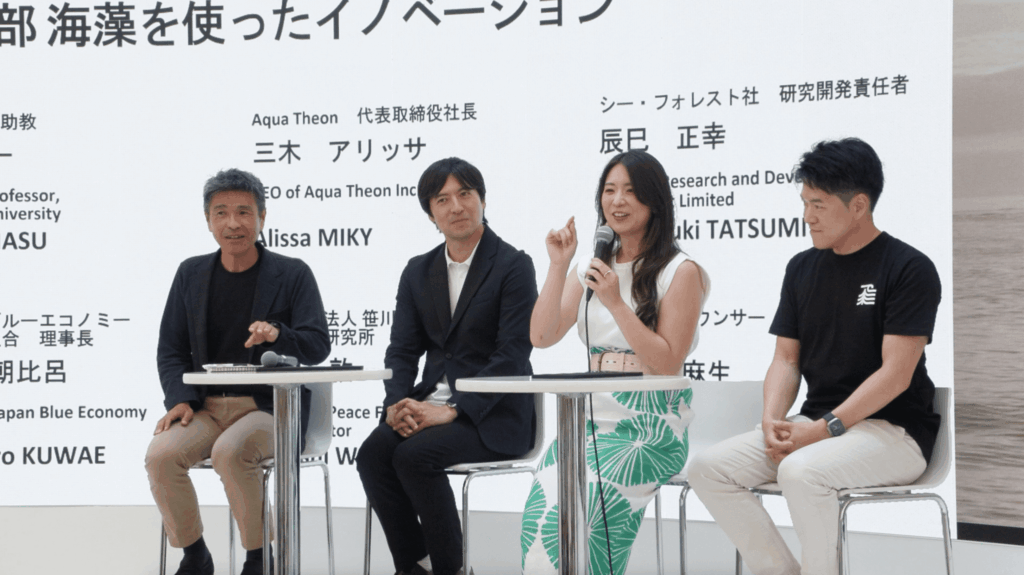
World Oceans Day Talk Show
On Sunday, June 8, a special event, the “World Oceans Day Talk Show,” was held to conclude Blue Economy Week. Actress, singer, and Palau Honorary Goodwill Ambassador Minako Tanaka and Sasakawa Peace Foundation Chairman Atsushi Sunami shared their thoughts on the ocean from their respective perspectives.
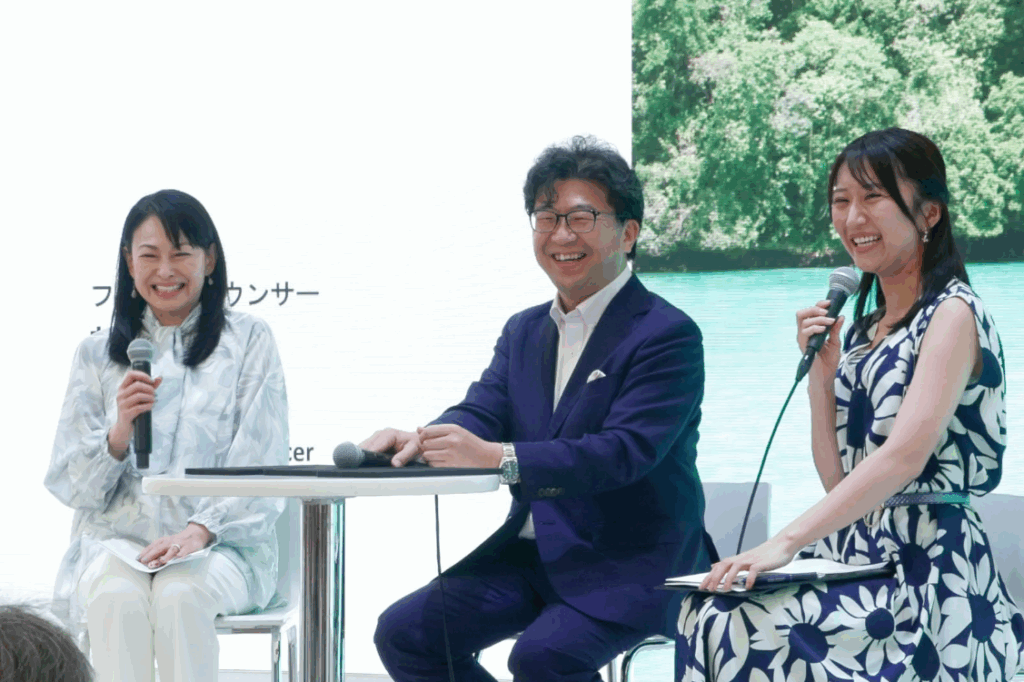
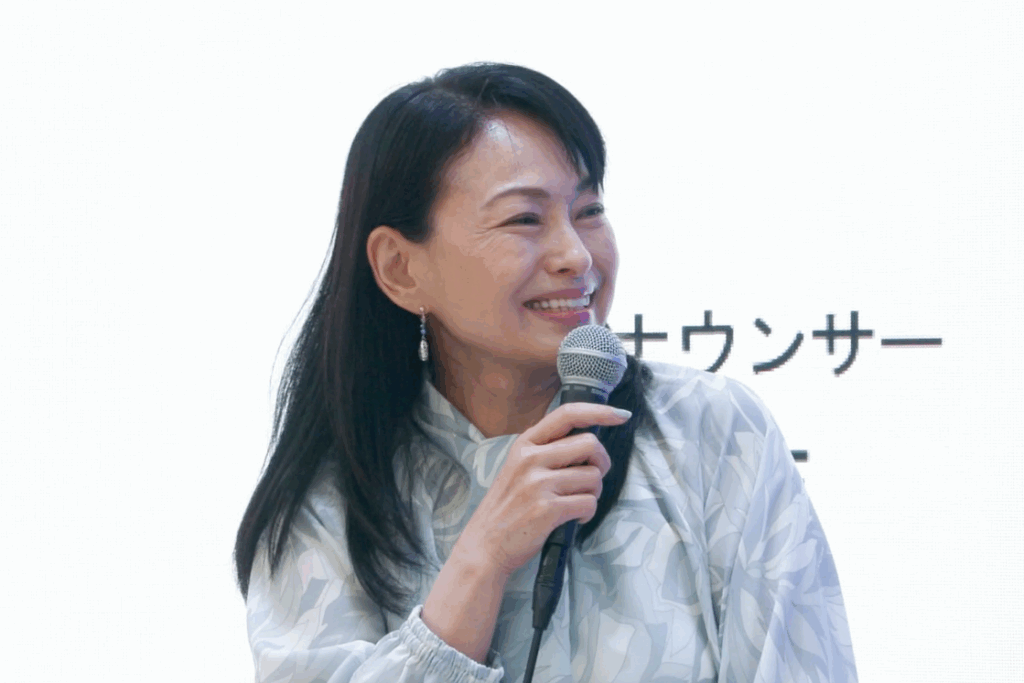
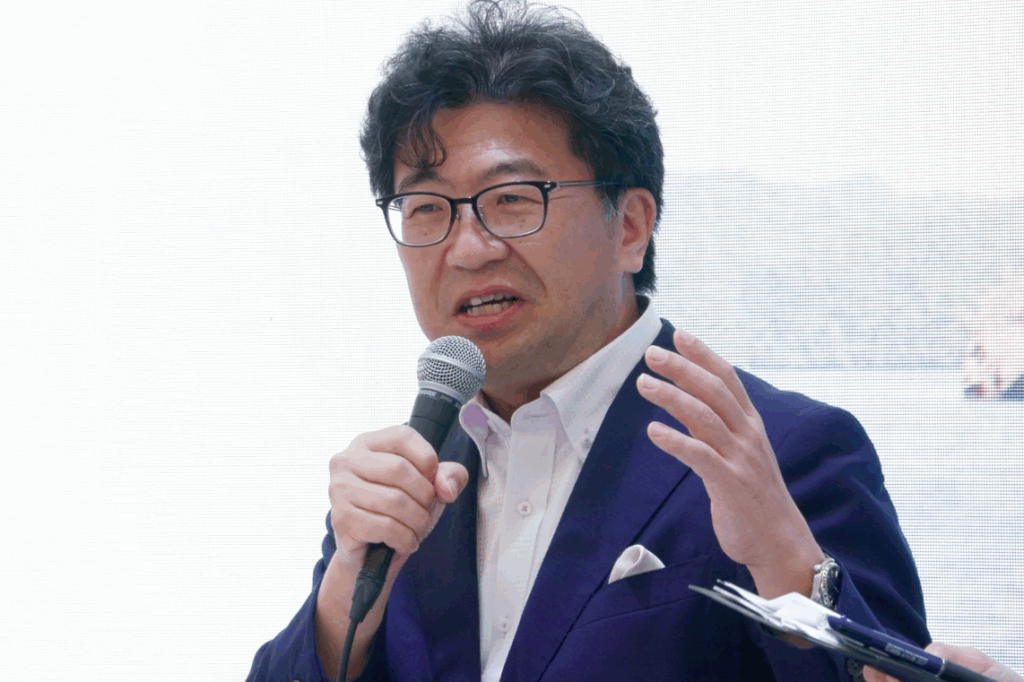
Tanaka said she has been visiting Palau almost annually since shooting her photo book. She spoke of being impressed by the “seven-colored sea,” whose hues change depending on the depth and topography, and the culture that remains deeply rooted in Japan’s history. Having witnessed the ocean’s ever-decreasing clarity, Tanaka now works as Palau Honorary Goodwill Ambassador, collaborating with the Sasakawa Peace Foundation to promote environmental conservation. Tanaka also expressed her enthusiasm for holding beach clean-up events across the country together with members of her choir, Neo☆Stars.
▼Videos of the event are currently available on YouTube’s official BLUE OCEAN DOME channel. Please take a look.
【#036】Japan’s Future Role in Realizing a Sustainable Society / Hopes for Blue Africa (ZERI JAPAN/Sasakawa Peace Foundation)
【#037】From Maritime Industry (UMIGYO) to a Japanese Blue Economy (Miura City) (ZERI JAPAN/Sasakawa Peace Foundation)
【#038】From Maritime Industry (UMIGYO) to a Japanese Blue Economy (Ainan Town) (ZERI JAPAN/Sasakawa Peace Foundation)
【#039】The Frontline of Aquaculture: Its Potential (The Frontline of Aquaculture Research and Practice) (ZERI JAPAN/Sasakawa Peace Foundation)
【#040】The Frontline of Aquaculture: Its Potential (Regional Contributions and International Collaboration through Land-Based Aquaculture) (ZERI JAPAN/Sasakawa Peace Foundation)
【#041】Marine Environmental Restoration and Ocean Visualization (Domestic Session) (ZERI JAPAN/Sasakawa Peace Foundation)
【#042】Marine Environmental Restoration and Ocean Visualization (Global Session) (ZERI JAPAN/Sasakawa Peace Foundation)
【#044】Screening and Talk Show of the Film “I’m Here, Alive. ~Guided by the Vanishing Seaweed Forests~” (ZERI JAPAN/Sasakawa Peace Foundation)
【#045】 “Vanishing Seaweed Forests” and Regional Conservation and Restoration Efforts (ZERI JAPAN/Sasakawa Peace Foundation)
【#046】Innovation from Seaweed (Pre-World Oceans Day Event) Part 1: The Co-Benefits of Seaweed (ZERI JAPAN/Sasakawa Peace Foundation)
【#047】Seaweed Innovation (Pre-World Oceans Day Event) Part 2: Seaweed Innovation Lecture and Talk Session (ZERI JAPAN/Sasakawa Peace Foundation)
【#048】World Oceans Day Talk Show @Blue Ocean Dome (ZERI JAPAN/Sasakawa Peace Foundation)